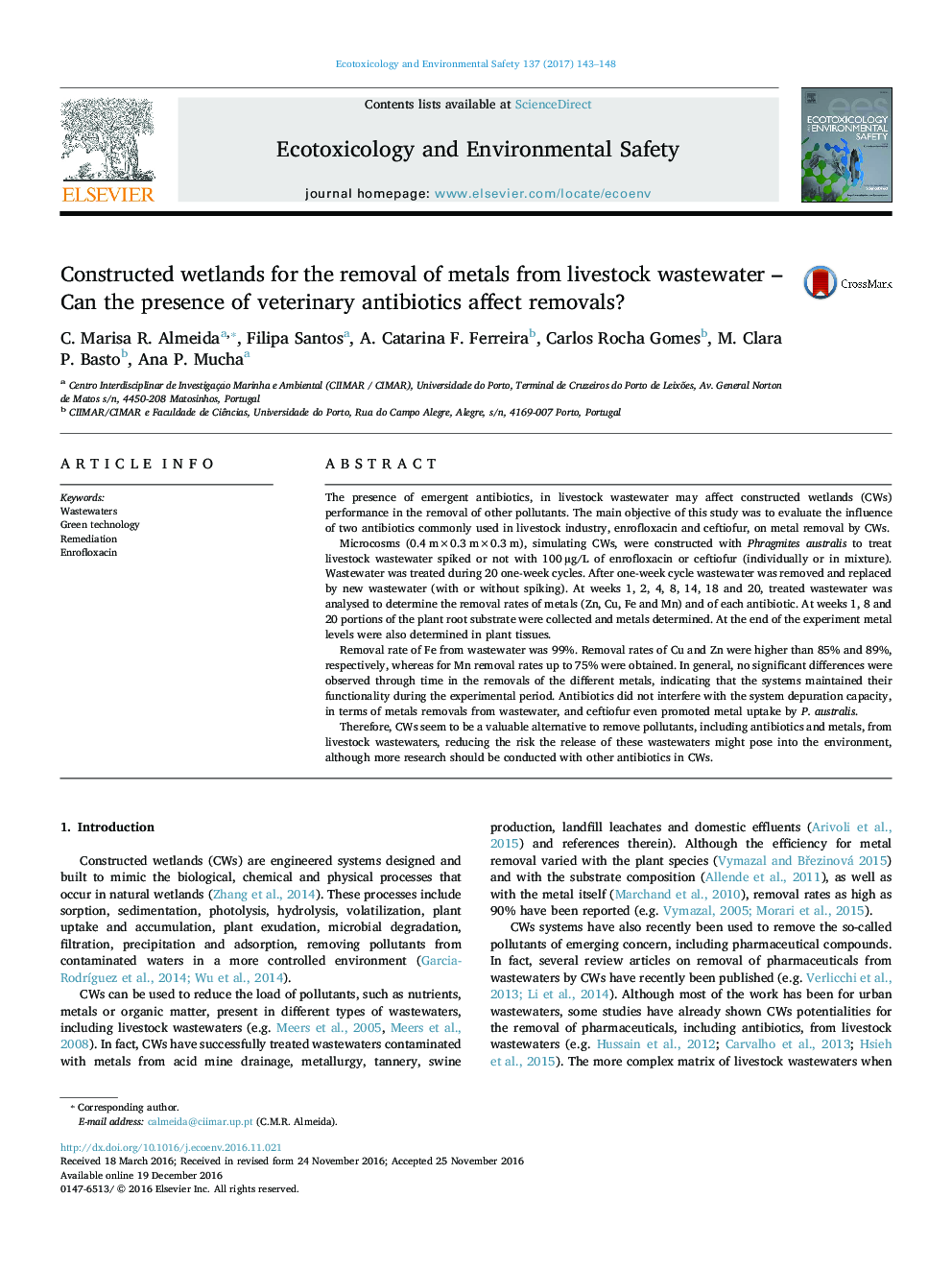| کد مقاله | کد نشریه | سال انتشار | مقاله انگلیسی | نسخه تمام متن |
|---|---|---|---|---|
| 5748073 | 1618927 | 2017 | 6 صفحه PDF | دانلود رایگان |

- Veterinary antibiotics influence on livestock wastewater remediation by CW assessed.
- Enrofloxacin and ceftiofur did not significantly affect metal removal in CWs.
- Metals (Cu, Fe, Mn and Zn) removal between 75% and 99% independently of antibiotics.
- Ceftiofur presence influenced metals accumulation in aboveground plant tissues.
- CWs are capable of pollutants removal, including antibiotics, from wastewaters.
The presence of emergent antibiotics, in livestock wastewater may affect constructed wetlands (CWs) performance in the removal of other pollutants. The main objective of this study was to evaluate the influence of two antibiotics commonly used in livestock industry, enrofloxacin and ceftiofur, on metal removal by CWs.Microcosms (0.4 mÃ0.3 mÃ0.3 m), simulating CWs, were constructed with Phragmites australis to treat livestock wastewater spiked or not with 100 µg/L of enrofloxacin or ceftiofur (individually or in mixture). Wastewater was treated during 20 one-week cycles. After one-week cycle wastewater was removed and replaced by new wastewater (with or without spiking). At weeks 1, 2, 4, 8, 14, 18 and 20, treated wastewater was analysed to determine the removal rates of metals (Zn, Cu, Fe and Mn) and of each antibiotic. At weeks 1, 8 and 20 portions of the plant root substrate were collected and metals determined. At the end of the experiment metal levels were also determined in plant tissues.Removal rate of Fe from wastewater was 99%. Removal rates of Cu and Zn were higher than 85% and 89%, respectively, whereas for Mn removal rates up to 75% were obtained. In general, no significant differences were observed through time in the removals of the different metals, indicating that the systems maintained their functionality during the experimental period. Antibiotics did not interfere with the system depuration capacity, in terms of metals removals from wastewater, and ceftiofur even promoted metal uptake by P. australis.Therefore, CWs seem to be a valuable alternative to remove pollutants, including antibiotics and metals, from livestock wastewaters, reducing the risk the release of these wastewaters might pose into the environment, although more research should be conducted with other antibiotics in CWs.
155
Journal: Ecotoxicology and Environmental Safety - Volume 137, March 2017, Pages 143-148